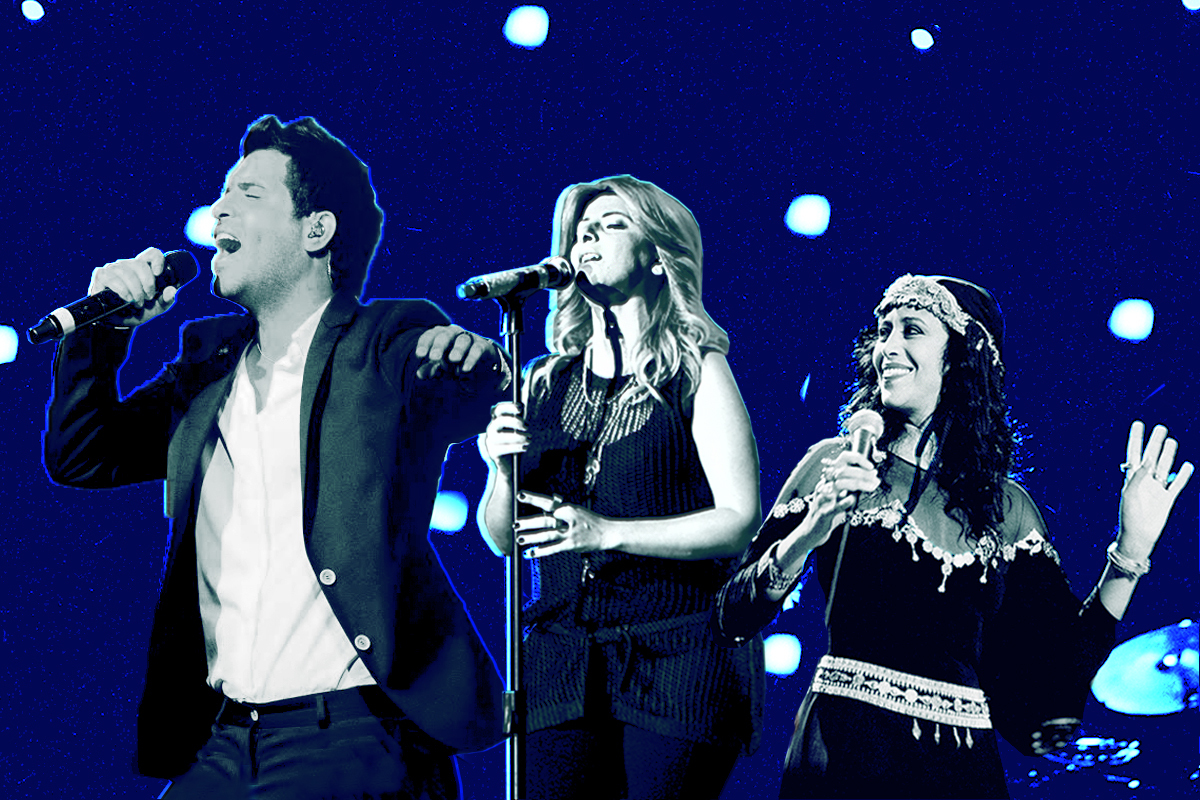If you’re anything like me — working from home, slumped in the same old chair, listening to the same old Spotify playlists — you might be in need of a little pick-me-up. What better way of raising your spirits than discovering — or diving deeper into — a new and exciting music genre?
In case you’re not familiar with it, Mizrahi music is largely based in Middle Eastern and oriental musical traditions. It’s all the rage in Israel, with many Hebrew hits crossing geo-political boundaries and gaining enormous traction in Arab countries. As a whole, this music genre is not only an effective bridge between seemingly disparate cultures (which actually have a whole lot in common, when you think about it), it’s also just a joy to listen to, evidenced by its status as the single most popular genre played at Israeli weddings. It’s fun, easy to sing and dance to, and occasionally even soulful and moving.
If I had to compare Mizrahi music with food — which I do, because food is the other super important cornerstone of Mizrahi culture — I’d say it can best be described as a blend of lemon, ginger, and cinnamon: warm and fresh, with just the right amount of kick to open up your throat and heart and get your feet moving.
And so I present a beginner’s guide to Mizrahi music:
Omer Adam
The current unrivaled ruler of the Israeli charts. Adam is the most mainstream Mizrahi artist to ever grace the airwaves. He’s come out with bop after bop, incorporating the traditional Mizrahi ululations with truly addictive melodies and a soulful voice. He’s known for his ability to convert even those who’ve previously disavowed Mizrahi music into loyal fans. Just listen for yourself.
Recommended songs: “Shnei Meshuga’im” (Two Crazy People), “Modeh Ani” (I Give Thanks)
A-WA
These three sisters are on another level, IMHO. They take the folk songs of their Yemenite ancestors and pair them with striking visuals, sick beats, and immaculate harmonies. In their music videos, you’ll find bright pink burqas and traditional Yemenite dances mixed with hip hop. Their music is a gift that will transport you to another reality.
Recommended songs: “Habib Galbi” (Love of My Heart), “Mudbira” (Miserable)
Nasrin Qadri
Qadri is something of a novelty in Israel — an Arab-Israeli who sings in both Hebrew and Arabic. She was the winner of a popular Mizrahi singing competition and has been a fan-favorite ever since. When people say “music builds bridges,” they mean music like Qadri’s.
Recommended songs: “Albi Ma’ak” (My Heart is With You), “Lomedet Lalechet” (Learning to Walk)
Eden Ben-Zaken
She may have risen to Israel’s 2013 X-Factor, but over the past seven years, Eden Ben-Zaken became something of a national sweetheart. I still remember watching her march onto that X-Factor stage wearing a 20-shekel animal print jumpsuit and belting her heart out. She has a sort of effortless charm, and a truly ethereal voice.
Recommended songs: “Chaim Sheli” (My Life), “Ratziti” (I Wanted)
Pe’er Tasi
Tasi is most known for his 2014 hit, “Derech HaShalom,” which took the entirety of the Middle East by storm and garnered the most YouTube views out of any other Israeli song that year. He’s also got a smile that could melt a thousand icebergs.
Recommended songs: “Derech Hashalom” (HaShalom Road), “Kol Hair Shelanu” (The City is Ours)
Amir Benayoun
Benayoun elicits heaps of emotion in his music — yes, you might be literally moved to tears while listening to him, so make sure you have a tissue in hand. His songs are a true embodiment of what Mizrahi music is all about — a communal demonstration of emotion, be it grief or joy, that brings people together.
Recommended songs: “Nitzacht Iti HaKol” (You Won it All with Me), “Omed Ba’Shaar” (Standing at the Gate)
Sarit Hadad
She’s been on the scene for a long time, and she’s not going anywhere. Hadad emerged as a pop-Mizrahi sensation in the ‘90s but has since evolved into a mature artist who delivers consistently timeless ballads.
Recommended songs: “BaChom Shel Tel Aviv” (In the Tel Aviv Heat), “Hayiti B’Gan Eden” (I Was in Heaven)
Zohar Argov
Argov is known in Israel as “the King.” He’s not exactly Elvis, but he has a cult-like following in Israel, based on his work in the ‘70s and ‘80s. Sadly, he passed away in 1987, but his music remains popular and beloved as ever.
Recommended songs: “HaPerach B’Gani,” (The Flower in My Garden), “Tsel Etz Tamar” (Shade of a Palm Tree)
Ofra Haza
If Zohar was the King, Ofra was undoubtedly the Queen. At one time, she was called “the Madonna of the Middle East,” and toured Europe and the U.S. with her album Yemenite Songs. Her music is a hybrid of liturgical Yemenite poetry and ‘80s electronic beats. She’s also my third cousin (#humblebrag), so give her a listen.
Recommended songs: “Im Nin’Alu” (If the Doors are Locked), “Shir HaFrecha” (The Frecha Song)
I should say, this is by no means an exhaustive list — there are far, far more Mizrahi artists to know and love. This guide is just one way to get you started.
Find a curated Spotify playlist of all this goodness here.
Update, June 24 at 4:25 p.m.: Since publishing this piece, it came to our attention that one of the featured musicians, Zohar Argov, was a convicted rapist. While we are leaving him in the text to acknowledge his contribution to Mizrahi music, Alma firmly condemns Argov.
Header image design by Grace Yagel; Peer Taasi via Wikimedia Commons, Sarit Hadad via Neukoln / Wikimedia Commons and Ofra Haza via Frans Schellekens/Redferns/Getty Images.



